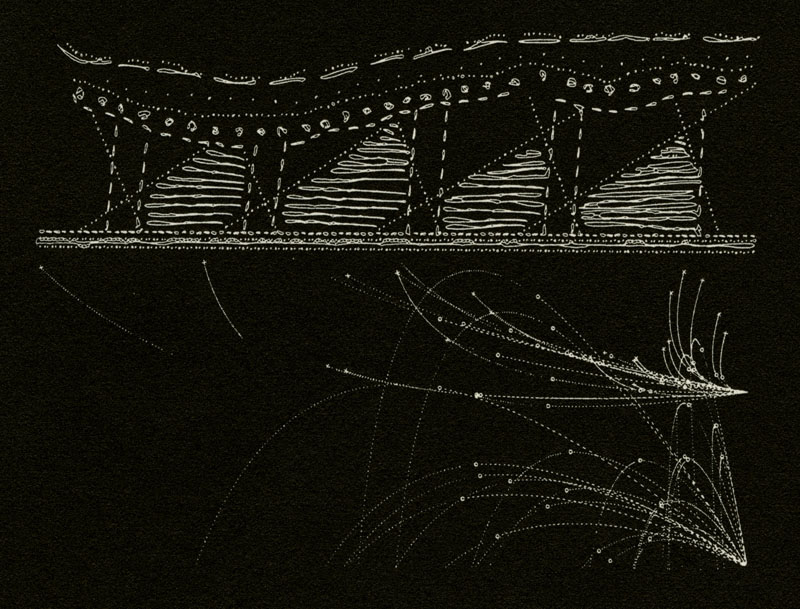
Visible from Space
2009 - Present | Multi-Modal Artwork

I appreciate the reference to Misrach; the canto is an appropriate structure to respond to the richness and paradox of the desert, which is hidden. It reminds me of the cowboys and ranchers that I met. Intimately engaged with the land, they do not willingly seek out the taxonomies of science. Desert nomenclature is colloquial; mountains have personalities, with names like Charley or Wayne, who are putting on grey hair when its cold, even in the summer; the valley is a familiar who wears a pretty spring dress.
Vince Dziekan: I really like the anecdote about desert colloquialism, so I might seize on this to take us back to the visual personality of the images you've crafted. Can you speak some more about their highly poetic vernacular and how asemic writing – which you mentioned earlier – relates to some of the concepts you are exploring in your work?
Paul Catanese: With regard to asemic writing, on the one hand, it was something I was most specifically thinking about with regard to the unique venue for the release of the image. I decided from the beginning that any of the images should be able to function as a starting point; and though there are certain irreversible concepts present, traversing the multiple visual narratives should be
In several cases throughout the series, the images reference events and experiments I conducted during my stay in the desert, working with rockets, helium balloons, windsocks, smoke, dust, mirror, lasers, wireless and infrared cameras, as well as found objects: natural and manufactured. Some of these references are photographic; others are culled directly from sketches and field notes. There is no division between notes describing planning, simulation of experiments, or field notes describing results. But perhaps more specifically, visual signifiers of scientific quantification or accumulation such as diagrams, graphs, and charts, detached from the context in which they were produced, begin to nod toward the asemic. These forms of message are a central feature in much of my work – both in the planning and performance. The rupture between communication encoded and message received provides a playful disruption in the language of narrative.
The colloquialism of the desert is omnipresent; between the detritus of human encampment, the violence of mining debris, overt military training stretched thin around forbidden Tarkovsky-esque zones, rangers struggling with tourists, scorpions, and crashed Cessna's, thirsty geologists, bordellos, experimental automotive test teams, ranchers – nothing is entirely familiar – and that which is recognizable, assumes new meanings, becomes less of a solid.
Research and development for 'Visible from Space' was supported by a month-long residency in June 2010 at the Goldwell Open Air Museum, just outside of Death Valley. Additionally, this project was chosen by the Leonardo Electronic Almanac to inaugaurate their Digital Media Exhibition Platform in 2010. Continued development provided by Anchor Graphics, a program of the Art+Design department at Columbia College Chicago, the College Art Association Services to Artists Commitee and Video in the Built Environment’s scan2Go exhibition, as well as the Kasa Gallery at Sabanci University in Istanbul.
The Central School Project in Bisbee, Arizona has supported devleopment of this project through extended Artist Residencies in 2009 and 2013.
